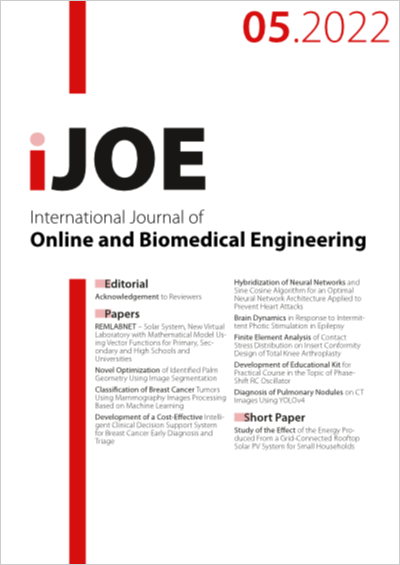REMLABNET – Solar System, New Virtual Laboratory with Mathematical Model Using Vector Functions for Primary, Secondary and High Schools and Universities
DOI:
https://doi.org/10.3991/ijoe.v18i05.27935Keywords:
remote laboratories, virtual laboratories, solar system, vector functions, education, REMLABNET, scienceAbstract
The main role of this article is to create a mathematical model using virtual laboratories for primary, secondary and high schools, and universities. The aim of the article is such a mathematical model to be applicable at all levels of education, with a substantial idea to teach students to think more scientifically. Analysis showed us two possible methods of creating a given model. Possible implementation is with differential equations or vector functions. After a thorough consideration and analysis of the subject we chose a vector function that interfere with a larger spectrum of students compared to differential equations. The main contribution of the work is already mentioned and that is a virtual laboratory, which in our case describes the Solar system and its movement using vector functions. This laboratory is useful, from a primary school, where students are getting to know the Solar system to secondary and high schools, and colleges, where educators can use this model on physics and mathematics lessons when taking over teaching vectors.
Downloads
Published
2022-04-12
How to Cite
Beňo, P., Matejdes, M., Schauer, F., & Šprinková, S. (2022). REMLABNET – Solar System, New Virtual Laboratory with Mathematical Model Using Vector Functions for Primary, Secondary and High Schools and Universities. International Journal of Online and Biomedical Engineering (iJOE), 18(05), pp. 6–17. https://doi.org/10.3991/ijoe.v18i05.27935
Issue
Section
Papers
License
Copyright (c) 2022 Pavel Beno, Milan Matejdes, Frantisek Schauer, Sandra Šprinková

This work is licensed under a Creative Commons Attribution 4.0 International License.



